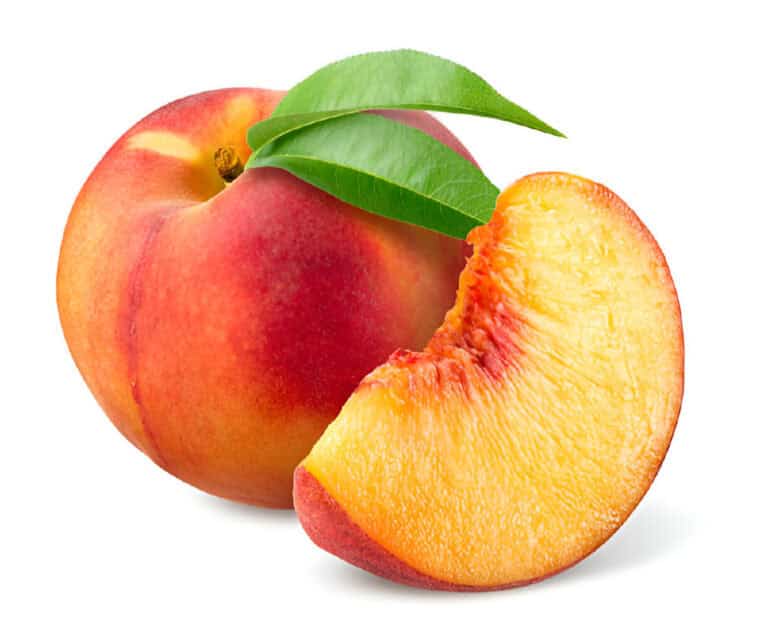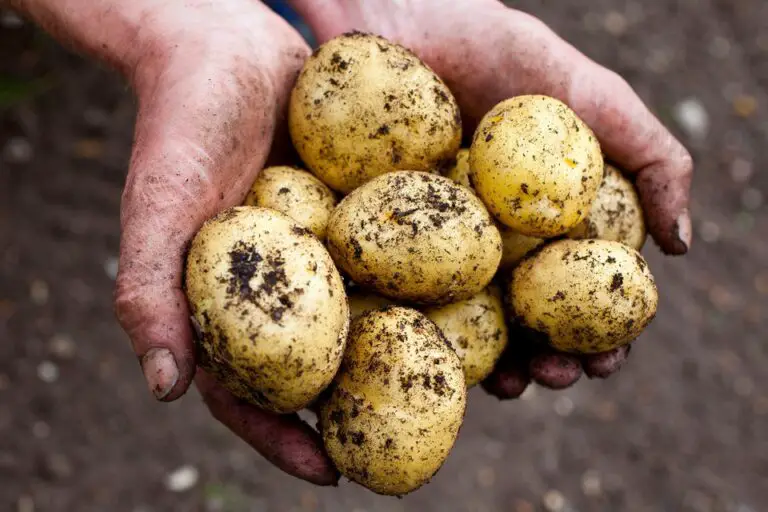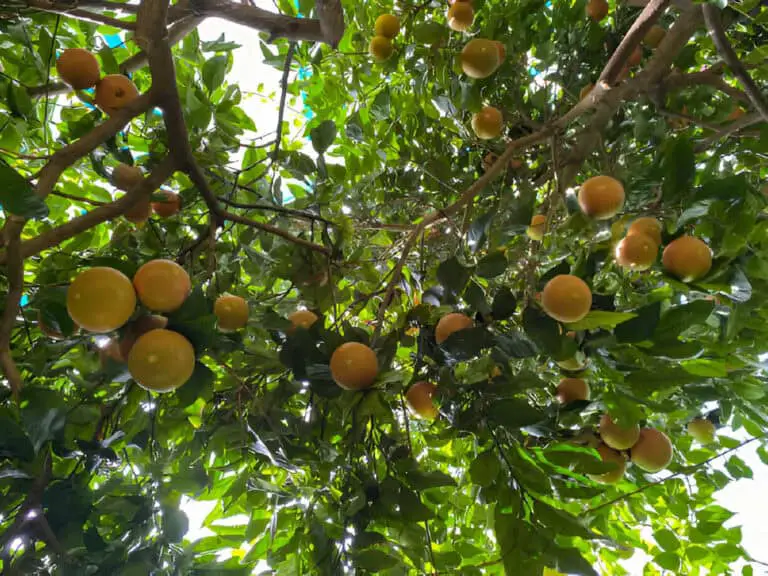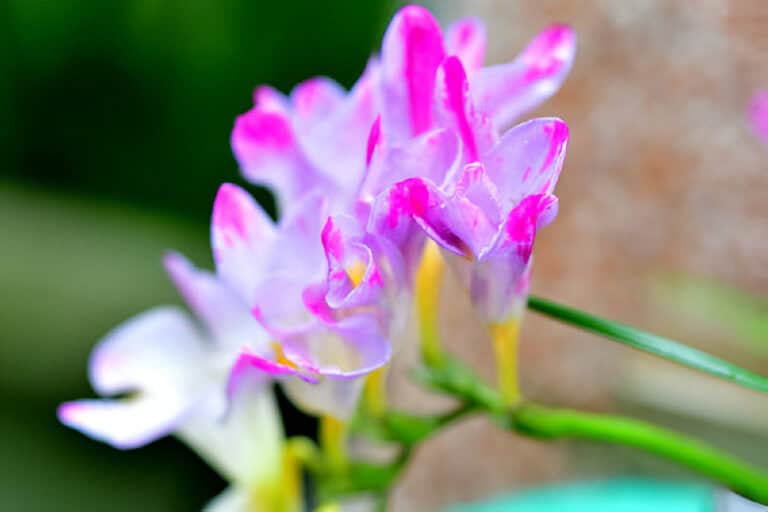How Many Acorn Squash Per Plant: A Guide to Maximizing Your Harvest

Acorn squash is a popular winter squash that is easy to grow and can produce a bountiful harvest. However, it’s important to know how many acorn squash per plant you can expect to get before you start planting. This will help you plan your garden and determine how many plants you need to grow to meet your needs.
The number of acorn squash per plant can vary depending on several factors, including the variety of squash, the growing conditions, and the care given to the plants. Generally, a single acorn squash plant can yield between 4 and 6 fruits per plant, with some varieties, such as “Honey Bear,” producing up to five fruits per plant.
Some varieties of acorn squash may produce more fruit per plant than others, and growing conditions such as soil quality, temperature, and moisture levels can also affect the yield. Additionally, proper care such as fertilization, pruning, and pest control can help maximize the number of acorn squash per plant.
Acorn Squash Plant Overview
Acorn squash (Cucurbita pepo) is a type of winter squash that is native to North and Central America. It is a popular vegetable that is known for its sweet, nutty flavor and its versatility in the kitchen. Acorn squash is also a nutritious vegetable that is low in calories and high in fiber, vitamin A, and potassium.
Acorn squash plants are typically bushy and compact, with a height of about 2 to 3 feet. They have large, lobed leaves that are green in color and rough to the touch. Bees and other insects pollinate the plants’ male and female flowers, which are both produced.
Acorn squash seeds can be sown directly in the garden after the last frost date, or they can be started indoors 3 weeks before the last frost date and transplanted outdoors once the soil temperature is consistently at least 60 degrees Fahrenheit.
Acorn squash plants require regular watering, especially during periods of drought. You need to water the plants deeply and infrequently rather than giving them frequent shallow watering. Mulching around the plants can help to retain moisture in the soil and prevent weeds from growing.
Acorn squash plants can be susceptible to pests and diseases, such as squash bugs, cucumber beetles, and powdery mildew. It is important to monitor the plants regularly and take action if any issues arise. This can include using organic pest control methods, such as handpicking insects or using insecticidal soap, and removing any infected leaves or fruits to prevent the spread of disease.
Optimal Growing Conditions

Acorn squash is a winter squash that requires specific growing conditions to thrive. In this section, we will discuss the optimal conditions for growing acorn squash successfully.
Soil Requirements
Acorn squash requires well-draining soil that is rich in organic matter. When planting acorn squash, choose a sunny location with well-drained soil. The ideal soil pH for acorn squash is between 6.0 and 6.8.
It is recommended to amend the soil with compost or aged manure before planting. Acorn squash plants prefer loose, loamy soil, which allows the roots to grow freely.
Sunlight Exposure
Acorn squash plants require full sun exposure to grow and produce fruit. They need at least 6–8 hours of direct sunlight per day. Therefore, it is essential to choose a location that receives full sun exposure throughout the day.
Watering Needs
Acorn squash plants require consistent watering throughout the growing season. The soil should be kept moist but not waterlogged. Overwatering can lead to root rot, and underwatering can cause the fruit to become stunted. It is recommended to water the plants deeply once a week, providing approximately one inch of water.
Acorn Squash Planting and Spacing
Acorn squash is a warm-season crop that requires a long growing season to mature. The best time to plant acorn squash is in late spring or early summer, when the soil temperature has warmed up to at least 60°F.
Seed Sowing Depth
When planting acorn squash seeds, sow them directly into the garden bed or in peat pots. The recommended depth for sowing acorn squash seeds is 1 inch deep. Sow 2-3 seeds per pot or hill, and thin to one plant per pot or hill once the seedlings have emerged and have grown to about 2 inches tall.
Plant Spacing Guidelines
Acorn squash plants require adequate space to grow and produce fruit. The recommended spacing for acorn squash plants varies depending on acorn squash growth stages and habits.
Bush-to-short-vine habits generally require 6 feet between-row spacing, while long-vine habits require 12 feet between-row spacing. In-row spacing depends on fruit size and is generally: small, 18-24 inches; medium, 24-36 inches; large, 36-48 inches.
It is important to note that overcrowding can lead to poor fruit development and increased susceptibility to diseases. Therefore, it is recommended to space the plants accordingly. Additionally, acorn squash plants require pollination to produce fruit. If a plant yields fewer than five fruits in a season, it may be due to low pollinator activity.
To increase the number of pollinators in the area, plant flowers near the vegetables to attract bees and butterflies.
How Many Acorn Squash Per Plant? Average Yield Per Plant
One of the most common questions among gardeners is how many acorn squash per plant they can expect to harvest.
The average yield per plant of acorn squash can vary depending on various factors, such as the variety of squash, growing conditions, and care provided. However, on average, one acorn squash plant can produce 4 to 6 squash.
It is important to note that acorn squash plants require ample space to grow and produce a good yield. Each plant needs about 50 square feet of space to grow properly. Gardeners can plant two to three plants per hill, and one or two hills should provide plenty for the average family.
In comparison to other winter squash varieties, such as butternut squash and pumpkin, acorn squash yields fewer fruits per plant. Butternut squash can produce an average of three to four fruits per plant, while most pumpkin varieties yield only one to two fruits per plant Weekand.com.
Realistic expectations for beginners:
Starting a garden can be an exciting endeavor, but it’s important to set realistic expectations, especially if you’re new to gardening. Acorn squash plants offer a generous yield potential, but as with any plant, there is a learning curve involved in successful cultivation.
For beginners, it’s highly recommended to start small and gain some experience before scaling up production. Planting just one or two acorn squash plants can be a great way to get started and learn the ins and outs of growing these vibrant vegetables. This will also allow you to focus your attention on individual plants better and provide them with the care they need.
By starting small, you can hone your skills in soil preparation, watering techniques, pest control, and overall plant care without overwhelming yourself. Learning these basics will not only increase your chances of success but also give you confidence for future endeavors.
Related: How Many Heads of Broccoli Per Plant?
Factors Affecting Acorn Sqush Yield
Acorn squash plants are known for their high yield. However, the number of acorn squash per plant can vary depending on several factors. Here are some of the factors that can affect the yield of acorn squash per plant.
Pollination
Acorn squash plants require pollination to produce fruit. Bees are the primary pollinators of acorn squash plants. If there are not enough bees in the area, the plant may not produce as much fruit. In addition, if the flowers are not pollinated properly, the fruit may not develop properly.
Pest and Disease Management
Pests and diseases can also affect the yield of acorn squash per plant. Squash bugs, cucumber beetles, and vine borers are some of the common pests that can damage the plants and reduce their yield.
In addition, diseases such as powdery mildew and downy mildew can also affect the yield of acorn squash per plant. It is important to manage pests and diseases properly to ensure a good yield.
Nutrient Availability
Acorn squash plants require a balanced supply of nutrients to produce a good yield. Nitrogen, phosphorus, and potassium are some of the important nutrients that are required by the plant. If the soil is deficient in these nutrients, the plant may not produce as much fruit.
It is important to fertilize the plants properly to ensure that they have access to the nutrients they need.
Harvesting Acorn Squash
Acorn squash is a winter squash that is harvested in the fall once the fruit has matured and the skin has hardened. Harvesting at the right time ensures that the fruit is flavorful and nutritious. In this section, we will discuss the best time to harvest acorn squash and the signs of maturity to look for.
Harvest Time
Acorn squash is ready to be harvested about 50–55 days after the fruit sets. It is important to harvest the fruit before any hard frosts, as this can damage the fruit and reduce its quality. Cut the fruits from the vines, leaving about an inch of stem attached to the fruit. Handle the fruits carefully to avoid bruising or damaging them.
Signs of Maturity
There are several signs of maturity to look for when harvesting acorn squash. The skin of the fruit should be hard and tough, with no give when pressed. The color of the skin should be a deep green with no yellow or orange spots. The stem should be brown and dry, indicating that the fruit has detached from the vine.
Another sign of maturity is the sound the fruit makes when tapped. A mature acorn squash will have a hollow sound, while an immature fruit will sound dull or solid. It is also important to note the size of the fruit. A mature acorn squash should be about 5-7 inches in diameter and weigh about 1-2 pounds.
Once the acorn squash has been harvested, it should be cured before storing. Sun curing by exposing the fruit to the sun for 5-7 days or indoor curing by keeping the squash at 80–85°F/27–29°C with good air ventilation is recommended. Take note that acorn squash will not get more ripe after harvest.
After curing, store the acorn squash in a cool, dry place with good air circulation. Properly stored acorn squash can last up to 3 months.
Storage and Preservation
Curing Process
After harvesting acorn squash, it is important to cure them properly to ensure maximum storage time. The curing process will help to toughen the skin and heal any cuts or bruises on the squash.
To cure acorn squash, place them in a warm, dry location, such as a sunny windowsill or covered porch, for about 10 days. Be sure to turn the squash over every few days to ensure even drying.
Storage Conditions
Once cured, acorn squash can be stored for several months in the right conditions. The ideal temperature for storing acorn squash is between 50 and 60 °F (10 and 15 °C), with a relative humidity of 50–70% and good ventilation. Repeated exposure to temperatures below 50°F/10°C may cause chilling damage.
Acorn squash should be stored in a cool, dark place, such as a basement, root cellar, or closet. Before storing, make sure the acorn squash is fully ripe and has no signs of damage or decay. Squash with a bit of the stem still intact will help slow down moisture loss.
It is important to check the squash regularly for any signs of decay or mold. Squash that has started to rot should be removed immediately to prevent spreading to other squash. Acorn squash are generally less palatable 3 months after harvesting, so it is recommended to use them within this time frame.
Conclusion
In conclusion, growing your own acorn squash can be a rewarding experience that provides you with fresh, delicious produce right from your garden. While the yield per plant may vary depending on various factors such as climate, soil condition, and care given to the plants, on average, you can expect to harvest around 4–6 acorn squashes per plant.
Throughout this article, we’ve discussed the growth habits of acorn squash plants and provided tips for maximizing their yield. We explored how planting multiple seeds in each hill or spacing them out can impact the number of squashes produced. We also learned about proper care and maintenance techniques, such as regular watering and fertilizing, to ensure healthy plant development.
At the end of the day, gardening is all about experimenting and learning from firsthand experience. So don’t be afraid to try new methods or make adjustments according to your specific conditions. With a little patience and attention, your acorn squash plants will reward you with a bountiful harvest that you’ll be proud of.
So set aside some space in your garden or even experiment with container gardening on your patio—who said squash needs vast spaces? Get ready for an abundance of tasty, homegrown goodness! Happy gardening!






